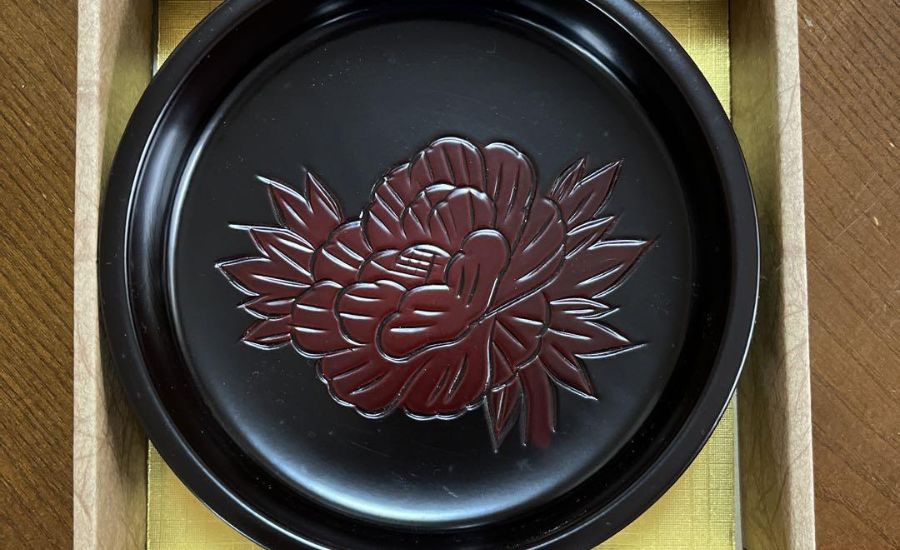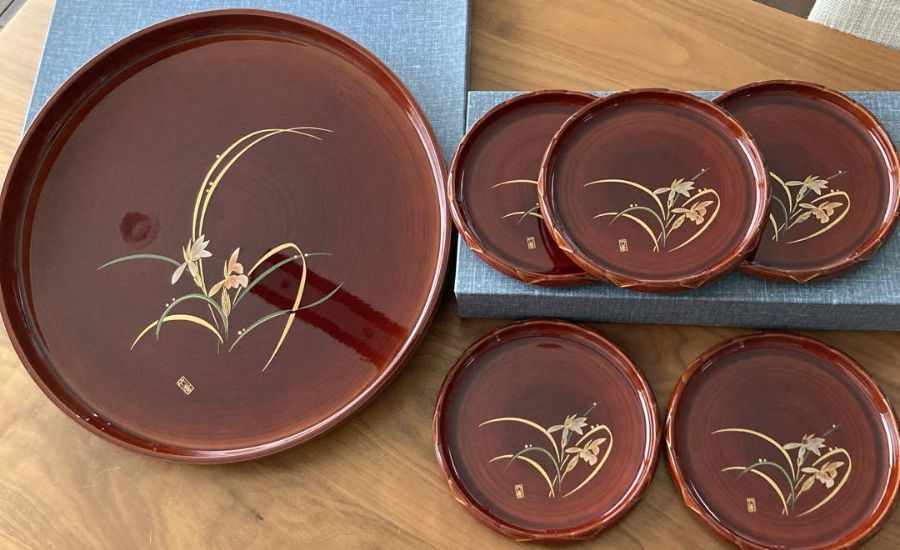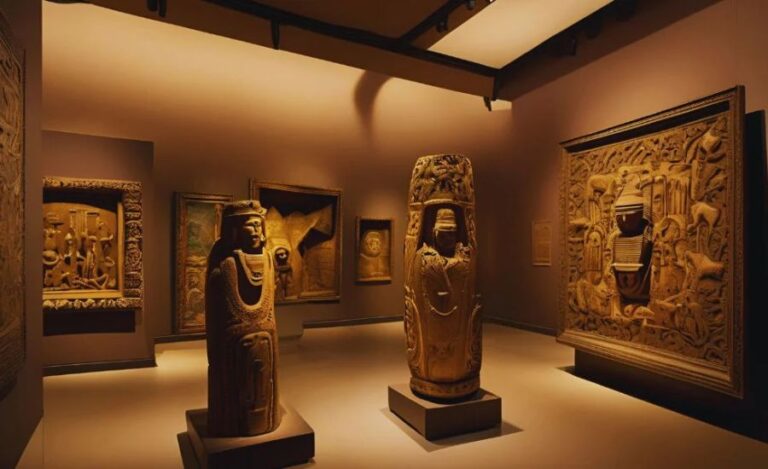칠기트레이 Laquerware, Cultural, History, craftsmanship, finishes & More
Introduction to 칠기트레이 Laquerware
칠기트레이 lacquerware trays, also known as chilgi treyi in Korean, are revered for their exquisite craftsmanship, cultural significance, and practical use. These lacquer trays are a stunning example of East Asian artistry, combining beauty with functionality. Famous for their glossy finishes and intricate designs, they hold a rich cultural heritage, particularly in Korean traditions. In this article, we delve into the fascinating world of 칠기트레이 lacquerware trays, exploring their craftsmanship, historical context, cultural importance, and why they continue to be cherished in homes around the world.
What Are 칠기트레이 Lacquerware Trays?
칠기트레이 (chilgi treyi) are lacquered trays made from wood or other materials that are coated with layers of natural lacquer. Lacquer, a resin obtained from trees, is used to create a hard, durable, and glossy surface. The meticulous process of applying several layers of lacquer results in a sleek and shiny finish that enhances the tray’s beauty and longevity.
In addition to their functional role as trays, 칠기트레이 are often adorned with intricate artwork or patterns, adding an element of sophistication. These designs may include traditional motifs, nature-inspired themes, or symbolic representations that hold cultural significance. The combination of craftsmanship and artistry makes these lacquerware trays a beloved feature in both traditional and modern settings, serving as a decorative piece as well as a practical object.
Key Features of 칠기트레이 Lacquerware Trays
1. Durability:
The lacquer coating on 칠기트레이 trays provides a robust and protective layer, making these trays highly resistant to water, heat, and scratches. This durability ensures that they can withstand regular use while maintaining their beautiful finish for years.
2. Aesthetic Appeal:
Each 칠기트레이 tray is a work of art, featuring a glossy, polished surface that reflects light beautifully. The intricate designs and detailed craftsmanship make these trays not just functional items but stunning decorative pieces. The vibrant patterns and designs often draw inspiration from nature, culture, or history, making each tray a unique addition to any space.
3. Versatility:
These trays serve multiple purposes, from practical uses like serving food or organizing personal items to being a statement piece in your home décor. Their sleek design allows them to fit seamlessly into both traditional and modern settings, making them ideal for a variety of applications.
4. Cultural Symbolism:
In East Asian culture, particularly in Korea, 칠기트레이 trays are symbols of elegance, tradition, and refinement. Often passed down through generations, they hold deep cultural value, representing respect for craftsmanship and the beauty of simplicity. Their association with ceremonial settings, family gatherings, and cultural rituals enhances their timeless appeal.
A Brief History of 칠기트레이 Lacquerware
칠기트레이 lacquerware boasts a rich and storied history, with its roots tracing back thousands of years to ancient China, Japan, and Korea. In Korea, the art of lacquerware, known as chilgi (칠기), evolved into a distinctive form of craftsmanship during the Goryeo and Joseon Dynasties, making it an integral part of Korean cultural heritage.
Historical Milestones

Goryeo Dynasty (918–1392):
During this period, the art of lacquerware saw significant development, particularly through the introduction of inlaid designs. Mother-of-pearl inlay became a hallmark of the Goryeo era, adding intricate details and elegance to lacquerware items. These pieces were often used for religious and ceremonial purposes, showcasing the dynasty’s advanced craftsmanship.
Joseon Dynasty (1392–1897):
The Joseon era marked a shift towards minimalist aesthetics, reflecting the Confucian ideals of simplicity and functionality. Lacquerware from this time emphasized clean lines, subtle designs, and practical use, making it an essential part of daily life in Korean households. The refined craftsmanship of this period laid the foundation for modern interpretations of 칠기.
Modern Era:
In the contemporary era, 칠기트레이 lacquerware has experienced a revival, blending traditional techniques with modern artistic expressions. Today, it remains a symbol of cultural heritage while adapting to new design trends and uses, ensuring its continued relevance in both Korean and global art scenes.
How 칠기트레이 Lacquerware Trays Are Made
Creating a 칠기트레이 lacquerware tray is a meticulous and time-intensive process that requires skilled artisans and a deep understanding of traditional craftsmanship. Every step of production ensures the final product is both durable and aesthetically pleasing.
Step-by-Step Process
1. Material Preparation:
The first step in crafting a 칠기트레이 involves selecting a sturdy base material. Common choices include wood, bamboo, or metal. These materials are chosen for their resilience and ability to hold the lacquer without warping or damage over time.
2. Applying Lacquer:
Once the base is prepared, natural lacquer is carefully applied. The process involves multiple layers of lacquer, with each layer needing to dry thoroughly before being polished. The tray’s strength is increased by this repeated operation, which also adds to its smooth and shiny appearance.The lacquer hardens over time, forming a protective surface that is resistant to water, heat, and scratches.
3. Design and Decoration:
After the lacquer has dried, intricate designs are added to the tray’s surface. These designs can be created using various techniques such as inlaying (e.g., mother-of-pearl), hand painting, or engraving. Each design is meticulously crafted to ensure its symmetry and beauty, adding a unique, artistic touch to the tray.
4. Final Coating:
To protect the design and ensure its longevity, a final layer of lacquer is applied. This final coating seals the decoration and enhances the tray’s durability, giving it a long-lasting, glossy finish. The final product is not only a functional item but also a beautiful work of art.
The production of 칠기트레이 lacquerware trays showcases the combination of artistry, tradition, and craftsmanship, making each tray a timeless and treasured piece.
The Cultural Significance of 칠기트레이 Lacquerware
칠기트레이 lacquerware trays are not merely functional items but are imbued with cultural symbolism and meaning, especially within Korean traditions. These trays embody sophistication and carry profound significance in various cultural contexts.
Symbolism in Korean Culture
1. Elegance and Refinement:
In Korean culture, 칠기트레이 lacquerware is often regarded as a symbol of elegance and refinement. The glossy finish, intricate designs, and high-quality craftsmanship make these trays suitable for formal occasions. They are commonly found in homes during significant events, where their beauty elevates the atmosphere.
2. Gift-Giving Tradition:
The practice of giving 칠기트레이 as gifts plays an important role in Korean culture, especially during weddings and milestone celebrations such as anniversaries or birthdays. These trays are considered meaningful gifts, representing respect, honor, and good wishes for the recipients. Their long-lasting durability also makes them a cherished item passed down through generations.
3. Connection to Nature:
The materials used in 칠기트레이 lacquerware, as well as the designs featured on these trays, reflect a deep connection to nature. The natural lacquer, often derived from tree sap, symbolizes a harmony with the environment, while the motifs used in the artwork, such as floral or landscape designs, reflect the beauty and balance of the natural world.
These symbolic elements make 칠기트레이 lacquerware more than just an object for daily use; they are cherished cultural treasures that continue to play an important role in Korean life and tradition.
Modern Uses of 칠기트레이 Lacquerware Trays
While 칠기트레이 lacquerware trays have deep cultural roots, their versatility has allowed them to seamlessly integrate into modern homes and lifestyles. Today, they serve not only as traditional art pieces but also as functional and stylish additions to contemporary living spaces.
Practical Applications
1. Home Décor:
In modern interiors, 칠기트레이 lacquerware trays are valued for their aesthetic appeal. They give any area a hint of refinement and class.Often placed on coffee tables, sideboards, or mantels, these trays enhance the overall decor by introducing elegance and traditional craftsmanship to contemporary design.
2. Dining and Hospitality:
These lacquerware trays are perfect for use during formal gatherings or special occasions. They can be used to serve food, drinks, or appetizers, elevating the dining experience with their glossy, intricate finish. Whether used at a dinner party or a family celebration, they add an element of grace and culture to any setting.
3. Organization:
Beyond serving and decorating, 칠기트레이 trays are also highly functional in organizing various household items. They can be used to hold jewelry, stationery, cosmetics, or other small items, keeping spaces neat and stylish. Their compact design allows for easy organization while maintaining an elegant appearance.
Incorporating in Modern Homes
To incorporate 칠기트레이 lacquerware trays into modern homes, consider pairing them with minimalist furniture. The contrast between the sleek, modern lines of contemporary furniture and the intricate detailing of the trays creates a visually appealing balance. Additionally, these trays can be used creatively as wall art, showcasing their beautiful craftsmanship and detailed designs as a statement piece in any room.
By integrating 칠기트레이 lacquerware into everyday spaces, you can enjoy the timeless beauty of traditional craftsmanship while embracing a modern aesthetic.
Caring for Your 칠기트레이 Lacquerware Trays
To ensure that your 칠기트레이 lacquerware tray retains its beauty and lasts for years, it is important to follow proper care and maintenance guidelines. With a little attention, you can preserve both the aesthetic appeal and the functionality of these exquisite pieces.
Maintenance Tips
1. Avoid Abrasive Cleaners:
When cleaning your 칠기트레이, always opt for a soft cloth and mild, non-abrasive soap. Harsh cleaners or scrubbing pads can damage the lacquer surface and dull the glossy finish. Gently wipe the tray to maintain its smooth, polished look.
2. Protect from Extreme Conditions:
Lacquerware is sensitive to extreme environmental factors. To prevent damage, keep your tray away from direct sunlight, as prolonged exposure can cause the colors to fade. Similarly, avoid placing the tray in areas with fluctuating temperatures or excessive humidity, as these conditions can cause the lacquer to crack or peel.
3. Handle with Care:
Handle your 칠기트레이 with caution. Avoid dropping the tray or placing heavy items on top, as this can lead to scratches or chips. To preserve its intricate designs and smooth finish, store the tray in a safe location when not in use, and refrain from stacking heavy objects on it.
By following these simple care guidelines, you can ensure that your 칠기트레이 lacquerware tray remains in excellent condition, allowing you to enjoy its elegance and craftsmanship for years to come.
Why 칠기트레이 Lacquerware Remains Timeless

칠기트레이 lacquerware trays continue to captivate people around the world due to their unique combination of artistry and functionality. These exceptional pieces not only serve practical purposes but also carry a rich cultural history, which has allowed them to remain relevant and appreciated across generations.
Key Reasons for Their Enduring Popularity
1. Versatile Aesthetic Appeal:
The design of 칠기트레이 trays is both elegant and versatile, making them suitable for a wide range of settings. Whether in traditional, minimalist, or contemporary environments, their timeless aesthetic effortlessly complements various interior styles, adding a sophisticated touch to any space.
2. Durability and Longevity:
Crafted using high-quality materials and the traditional lacquer application process, these trays are built to last. The durable lacquer finish protects the trays from scratches, moisture, and heat, ensuring they can withstand the passage of time while retaining their beauty.
3. Cultural and Artistic Significance:
Beyond their practical uses, 칠기트레이 lacquerware trays hold immense cultural and artistic value. They are revered not just for their craftsmanship but also for their ability to convey a deep connection to East Asian traditions. Owning or displaying one of these trays connects individuals to centuries of cultural heritage, making them more than just decorative objects—they are cherished works of art.
The timeless appeal of 칠기트레이 lacquerware lies in its perfect blend of functionality, beauty, and cultural depth, ensuring it continues to be valued by collectors, interior designers, and art enthusiasts alike.
Final Words
칠기트레이 lacquerware trays are more than just practical household items; they are a symbol of cultural heritage, artistry, and timeless beauty. From their intricate designs to their robust construction, these trays have stood the test of time, remaining relevant in both traditional and modern settings. Their versatility, durability, and connection to history make them valuable additions to any home, serving both functional and aesthetic purposes. Whether used for serving meals, as decorative pieces, or as heirlooms passed down through generations, 칠기트레이 trays continue to captivate and inspire.
Frequently Asked Questions (FAQs)
1. What is 칠기트레이 lacquerware?
칠기트레이 refers to traditional Korean lacquerware trays, which are made by applying multiple layers of lacquer on a base material such as wood, bamboo, or metal. These trays are often decorated with intricate designs, making them both functional and decorative.
2. How are 칠기트레이 trays made?
The production of 칠기트레이 involves applying layers of natural lacquer to the base material, followed by polishing after each layer dries. Once the base layers are completed, the tray is decorated with designs such as inlays, paintings, or engravings. A final coat of lacquer is applied to seal the design and provide a glossy finish.
3. How can I incorporate 칠기트레이 in modern decor?
칠기트레이 trays can be used as both decorative items and functional pieces in modern homes. They can serve as unique centerpieces on coffee tables, be used for organizing small items like jewelry or stationery, or even as trays for serving food at special occasions. Pairing them with minimalist furniture can create a striking contrast, highlighting their intricate designs.
4. How should I care for my 칠기트레이?
To keep your 칠기트레이 in excellent condition, avoid using abrasive cleaners and instead clean with a soft cloth and mild soap. Protect the tray from extreme heat, direct sunlight, and moisture. Handle the trays with care to prevent scratches or damage.
5. Can 칠기트레이 be used as a gift?
Yes, 칠기트레이 trays make excellent gifts, particularly for special occasions such as weddings, anniversaries, or milestone celebrations. Their cultural significance and aesthetic appeal make them thoughtful and meaningful presents.
Key Facts about 칠기트레이 Lacquerware
- Origin: The art of lacquerware has ancient roots in East Asia, with 칠기트레이 trays being a prominent part of Korean craftsmanship.
- Material: These trays are typically made from wood, bamboo, or metal, which are then coated with layers of natural lacquer.
- Cultural Importance: In Korean culture, 칠기트레이 trays are symbols of sophistication, often used in formal settings and as gifts for special occasions.
- Designs: The trays are known for their intricate designs, which can include inlaid materials like mother-of-pearl or delicate hand-painted motifs.
- Durability: The lacquer finish not only enhances the tray’s appearance but also makes it resistant to scratches, water, and heat, ensuring long-lasting use.
The cultural richness and craftsmanship behind 칠기트레이 lacquerware trays make them treasured items in both traditional and modern households, preserving the artistry of East Asia for future generations.
For more Art About blog visit idealrular

